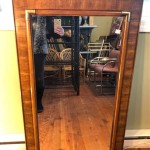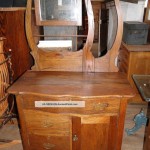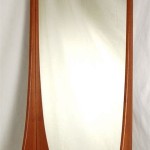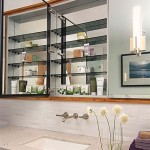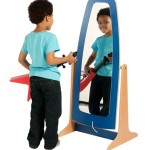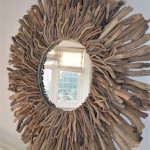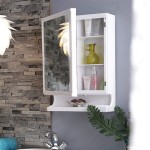Are Rear View Mirrors Convex or Concave: Understanding Mirror Types and Functionality
Determining whether a rearview mirror is convex or concave is crucial for understanding its function and how it enhances driving safety. This article explores the properties of each mirror type and clarifies why a specific type is preferred for rearview mirrors in vehicles.
Convex Mirrors: Definition and Properties
A convex mirror is a curved mirror where the reflective surface bulges outwards. This unique shape dictates how light interacts with the mirror and subsequently how images are formed. Key characteristics of convex mirrors include:
- Virtual Images: Images formed by convex mirrors are always virtual, meaning they appear to be behind the mirror’s surface and cannot be projected onto a screen.
- Diminished Images: The images are smaller than the actual object, offering a wider field of view.
- Upright Images: Images retain the same vertical orientation as the object.
- Diverging Light: Convex mirrors diverge incident light rays, spreading them outwards.
Concave Mirrors: Definition and Properties
Concave mirrors, in contrast, possess a reflective surface that curves inwards. Their distinct shape leads to different image properties compared to convex mirrors.
- Real or Virtual Images: Concave mirrors can form both real and virtual images depending on the object's distance from the mirror's surface.
- Varied Image Size: Images can be larger, smaller, or the same size as the object, depending on the object's position relative to the focal point.
- Inverted or Upright Images: Images can be inverted (upside down) or upright, again determined by the object's distance from the focal point.
- Converging Light: Concave mirrors converge incident light rays, focusing them towards a point.
Rearview Mirrors and the Choice of Convexity
Passenger-side rearview mirrors in vehicles universally employ convex mirrors. This choice is driven by the specific advantages offered by convex mirrors for this application:
- Wider Field of View: The diminished image produced by a convex mirror allows the driver to see a wider area behind and to the side of the vehicle. This increased field of view significantly reduces blind spots, enhancing safety.
- Enhanced Awareness of Surrounding Traffic: The wider perspective provides the driver with a greater understanding of the traffic situation, aiding in lane changes and merging maneuvers.
- Object Distance Perception: While objects appear smaller in a convex mirror, drivers quickly adapt to judging distances based on relative size and movement. The safety benefits of the expanded field of view outweigh the slight distortion in perceived distance.
Why Concave Mirrors Are Unsuitable for Rearview Mirrors
Concave mirrors, while useful in other applications like telescopes and makeup mirrors, present significant drawbacks when considered for rearview mirrors:
- Limited Field of View: Depending on the curvature and object distance, concave mirrors can offer a significantly smaller field of view than convex mirrors, making them inadequate for capturing a comprehensive view of rearward traffic.
- Image Distortion and Inversion: Depending on the distance of vehicles behind, concave mirrors can produce distorted and potentially inverted images, making it difficult to accurately judge the position and speed of other vehicles.
- Focus Dependency: The properties of the image formed by a concave mirror depend heavily on the object's distance from the mirror. This variability would be highly impractical and unsafe in a rearview mirror context, where the distance of vehicles behind is constantly changing.
The "Objects in Mirror Are Closer Than They Appear" Warning
The common warning label "Objects in mirror are closer than they appear" on passenger-side rearview mirrors directly addresses the image properties of convex mirrors. Because objects appear smaller, they can also be perceived as farther away than they actually are. This warning reminds drivers to account for this perceptual difference and exercise caution when relying on the mirror's image.
- Safety Precaution: The warning label serves as an essential safety precaution, prompting drivers to double-check their surroundings and not solely rely on the mirror's image for judging distances.
- Legal Requirement: In many jurisdictions, this warning label is a legal requirement for passenger-side convex mirrors.
- Driver Education: The presence of the label reinforces driver education regarding the properties of convex mirrors and the importance of cautious driving.
Center Rearview Mirror Differences
While passenger-side mirrors are always convex, the center-mounted rearview mirror usually employs a plane (flat) mirror. This allows for a more accurate representation of the scene behind the vehicle without distortion. However, some vehicles offer a "day-night" feature for the center mirror. In the night setting, the mirror is angled to reflect light from a dimmed secondary reflective surface. This reduces glare from headlights of trailing vehicles. This dimming function does not change the fundamental planar nature of the mirror’s reflection.
- Plane Mirror for Accuracy: The plane mirror provides a true-to-size, undistorted image, useful for judging the speed and distance of vehicles directly behind.
- Day-Night Feature for Glare Reduction: The anti-glare feature, while achieving dimming through reflection adjustments, maintains the planar reflection properties, preventing distortion.
Conclusion
Understanding the difference between convex and concave mirrors is essential for understanding the functionality of rearview mirrors and therefore for safe driving practices. The convex mirror's wider field of view, despite the slight image diminution, is a critical safety feature in passenger-side rearview mirrors. The warning label "Objects in mirror are closer than they appear" is a crucial reminder of this property. Center-mounted rearview mirrors typically employ a plane mirror for a distortion-free image directly behind the vehicle.

Convex And Concave Mirrors In Cars

Concave Vs Convex Mirrors In Cars
In Trucks Cars Buses Side View Mirrors Are Convex But Center Rear Mirror Is Or Plane Quora

Why Do We Prefer A Convex Mirror As Rear View In Vehicles

Why Do We Prefer Convex Mirror As A Rear View In Vehicles Class 10 Ch Light Physics

Which Mirror Is Used For Rear View Image And Why Describe With Ray Diagram Edurev Class 10 Question

Convex Concave Mirror Car Motorcycle Rear View Glass China Silver Made In Com
Which Mirror Is Used In Vehicles And Cars Quora

Car Mirror Hd Convex Blind Spot Auto Rearview Temu

Objects In Mirror Are Closer Than They Appear Wikipedia
